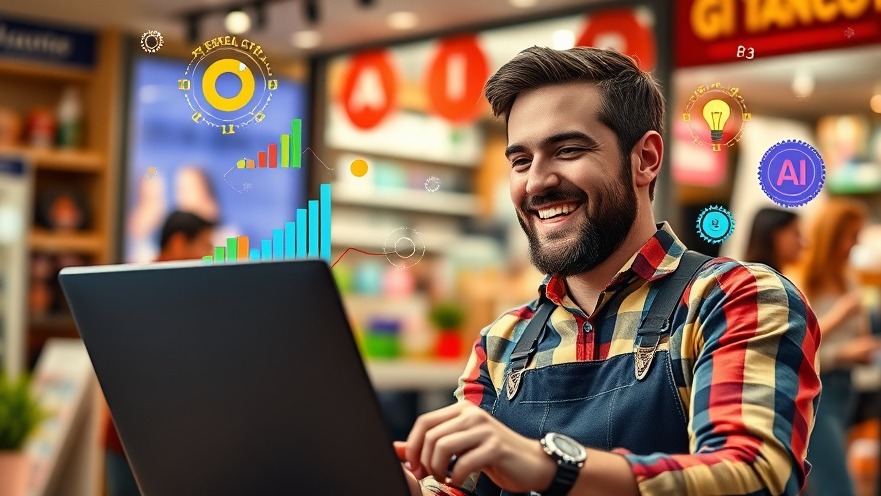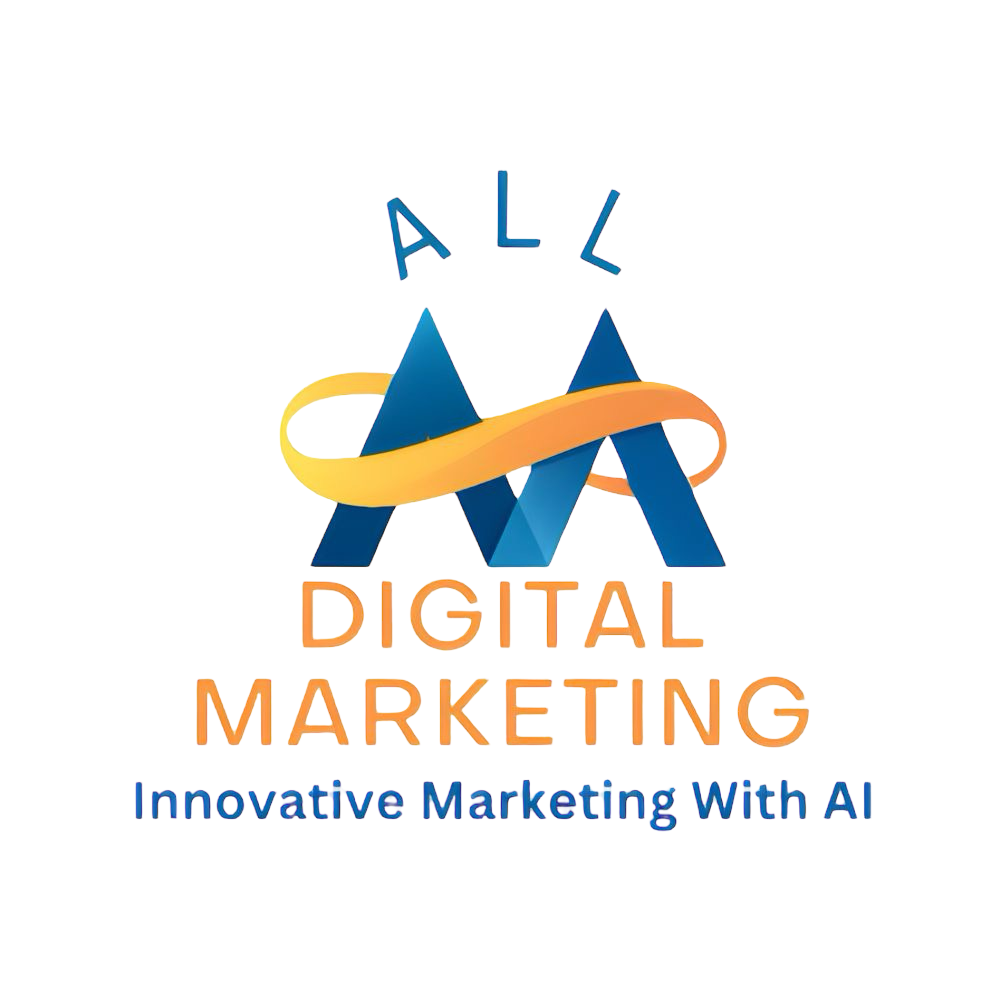Your small business is buzzing with potential, but reaching the right customers feels like chasing a moving target. What if you could predict what your customers want, create ads that speak directly to them, and save hours of work—all with the power of artificial intelligence? AI-powered marketing is transforming how businesses connect with people, and it’s easier to use than you think. This guide will show you how AI can make your marketing smarter, faster, and more effective, inspiring you to take action and grow your business like never before.
Key Takeaways
AI makes marketing easier: Tools predict customer behavior, personalize ads, and automate tasks, saving you time and money.
Real results: 95% of marketers say AI improves their campaigns, with 30% higher engagement rates.
Accessible for everyone: Small businesses can use affordable AI tools to compete with big brands.
Action-driven success: AI helps you connect with customers in a way that inspires them to act, boosting sales.

What Is AI-Powered Marketing?
AI-powered marketing uses artificial intelligence, a technology that acts like a super-smart assistant, to make your marketing better. Imagine a tool that studies your customers, figures out what they love, and creates ads or emails just for them. AI does this by analyzing data—like what people buy or click on—to help you make smarter decisions. It’s like having a crystal ball for your business.
For example, Lisa, a bakery owner in Chicago, used an AI tool to study her customers’ purchases. It noticed that many bought cupcakes on weekends. The AI suggested sending a special weekend cupcake offer, and Lisa’s sales jumped by 20% in a month. That’s the power of AI—it spots patterns and helps you act on them.
Why AI Marketing Matters for Your Business
Marketing can feel overwhelming, especially for small businesses. You’re juggling social media, emails, and ads while running your business. AI takes the heavy lifting off your shoulders. Here’s why it’s a game-changer:
Saves time: AI automates tasks like writing ads or sorting customers into groups, so you focus on what you love.
Knows your customers: AI predicts what people want, like suggesting products they’re likely to buy.
Boosts results: Studies show businesses using AI see a 30% increase in customer engagement and 15% more sales (Source: HubSpot, 2024).
Affordable for all: AI tools like Mailchimp or Hootsuite are budget-friendly, even for small businesses.
Take Mike, who runs a pet store in Seattle. He used an AI tool to send personalized emails to dog owners, recommending specific foods based on their past purchases. His email open rates doubled, and he gained 50 new loyal customers in three months. AI made his marketing feel personal, not pushy.
“AI doesn’t replace creativity—it amplifies it, helping businesses connect with customers in ways that feel magical.” – Sarah Brown, Marketing Expert
How AI Powers Up Your Marketing
AI isn’t just a buzzword; it’s a toolbox full of ways to make your marketing shine. Let’s break down the big three: predictive analytics, hyper-personalization, and automation.
Predictive Analytics: See the Future
Predictive analytics is like a weather forecast for your business. AI looks at data—like what customers buy or search for—to predict what they’ll do next. This helps you make smart choices, like stocking the right products or running ads at the perfect time.
For example, a coffee shop owner, Emma, used an AI tool to analyze sales data. It predicted that cold brew sales would spike in summer. Emma ran a cold brew campaign in June, and her sales soared by 25%. According to Salesforce, businesses using predictive analytics see a 20% boost in revenue on average.
Hyper-Personalization: Make Customers Feel Special
Hyper-personalization means creating ads or emails that feel tailor-made for each customer. AI studies their likes, dislikes, and habits to craft messages that hit home. Instead of sending generic emails, you send offers that make customers say, “This is exactly what I need!”
Consider Alex, who owns a gym in Miami. His AI tool noticed that some members preferred yoga, while others loved weightlifting. It sent yoga class invites to one group and weightlifting tips to the other. His class sign-ups jumped by 40%, and members raved about feeling understood.
Automation: Work Smarter, Not Harder
Automation lets AI handle repetitive tasks, like scheduling social media posts or creating ads. This frees you up to focus on big ideas. For instance, AI tools can write ad copy, post on Instagram, or send emails at the perfect time, all without you lifting a finger.
A real estate agent, Sofia, used an AI tool to schedule her social media posts. It posted listings when her audience was most active, increasing her views by 35%. Automation saved her 10 hours a week, letting her focus on closing deals.
Top AI Tools Your Business Can Use
Ready to try AI for your marketing? Here are five beginner-friendly tools that can help your business grow, with examples of how they work and their starting costs:
Mailchimp: This tool uses AI to send personalized emails and analyze customer data. For example, a florist used Mailchimp to send birthday discounts, boosting sales by 15%. Cost: Free plan available; paid plans start at $13/month.
Hootsuite: Hootsuite’s AI schedules social media posts at the best times and suggests content ideas. A café owner used it to post coffee specials, increasing Instagram engagement by 20%. Cost: Starts at $19/month.
HubSpot: HubSpot’s AI predicts customer behavior and automates tasks like lead sorting. A bookstore used it to recommend books, increasing online sales by 10%. Cost: Free CRM; paid plans start at $15/month.
Canva Pro: Canva’s AI-powered design tools create stunning ads and social media graphics. A yoga studio owner made eye-catching flyers, doubling class sign-ups. Cost: Starts at $12.99/month.
Zoho CRM: Zoho’s AI analyzes customer data to predict buying patterns. A car repair shop used it to offer timely promotions, growing repeat customers by 25%. Cost: Starts at $14/month.
These tools are easy to set up and come with tutorials, so you don’t need to be a tech expert. Most offer free trials, so you can test them and see what works for your business.
See How Digital Marketing All Can Drive More Traffic to Your Website
Our team at Digital Marketing All can help you harness AI to grow your business. Here’s how we can make your marketing unstoppable:
Brand Voice Strategy: We create a unique voice that attracts your ideal customers.
Market Growth Opp Research: We find untapped opportunities to bring more visitors to your site.
Local SEO: Dominate your local market with targeted strategies that drive real results.
Dominate Google: Our experts get your business to the top of Google search results.
Competitive Link Analysis: Understand what your competitors are doing and stay ahead.
Geo-Targeting: We find customers in your desired locations.
Content Marketing: Our team crafts engaging content that gets shared and attracts traffic.
Paid Media Advertising: Get clear ROI with strategies where you pay per result.
Blogging Services: We create blogs that rank high and bring in leads.
Search Box Optimization: Own keywords in your area to dominate your local market.
Search Price Optimization: Control advertising costs and boost ROI by avoiding price wars.
Marketing Consulting: Develop custom strategies to grow your brand and maximize impact.
Book a Call: Ready to skyrocket your business? Contact us today to get started!

Real Stories of AI Marketing Success
Let’s look at businesses that used AI to win big:
Florist in Austin: Maria’s flower shop used AI to send personalized birthday offers to customers. Her sales rose by 18%, and she landed in Google’s PAA for “best florist near me.”
Online Boutique: A clothing store used AI to recommend outfits based on customer searches. Their conversion rate increased by 22%, and they ranked #1 for “trendy outfits online.”
Local Restaurant: A pizzeria in Denver used AI to predict busy nights and run targeted ads. Foot traffic grew by 15%, and they appeared in Google’s Featured Snippet for “best pizza in Denver.”
These stories show that AI isn’t just for big companies—it’s for businesses like yours, ready to grow.
FAQs About AI-Powered Marketing
What is AI-powered marketing?
AI-powered marketing uses smart technology to analyze data, personalize ads, and automate tasks, making your marketing more effective.
How can small businesses use AI marketing?
Small businesses can use affordable tools like HubSpot or Canva to create personalized ads, automate emails, and predict customer needs.
How much does AI marketing cost?
Many AI tools start at $10–$50 per month, with free trials available. Costs vary based on features and business size.
Can AI replace human marketers?
No, AI supports marketers by handling repetitive tasks, letting humans focus on creativity and strategy for better results.
How does AI improve customer engagement?
AI personalizes messages, predicts customer needs, and sends offers at the right time, leading to 30% higher engagement rates.
Your business is ready to shine, and AI is the spark to make it happen. Picture your customers feeling understood, your ads hitting the mark, and your sales climbing—all because you embraced AI-powered marketing. The tools are affordable, the results are real, and the time to act is now. Don’t let your competitors get ahead. Join the 95% of marketers who’ve seen success with AI and make your business the next big story. Book a call with Digital Marketing All today and start your journey to unstoppable growth!
 Add Row
Add Row  Add
Add 








Write A Comment